Since 2009, there has been a sharp increase in the US military activities in the South China Sea in terms of the frequency, intensity, and pertinence. Over the past decade, the presence of surface ships has risen by more than 60% to about 1000 ship days per year; an average of 3-5 sorties military aircraft are dispatched to the South China Sea every day, most of which are reconnaissance aircraft, with more than 1,500 sorties throughout the year.
US military aircraft conducting close-in reconnaissance of China is not big news. However, the number and details remain unclear to academia and the public except for the military of US and China. To figure this out, the South China Sea Strategic Situation Probing Initiative (SCSPI) started to track and analyse their activities since July of 2020. Our analysis is based on the commercial data of the Automatic Dependent Surveillance Broadcast (ADS-B) with secondary data mining. Reports will be published on a regular basis.
In July, 67 sorties of large US reconnaissance aircraft were undertaken over the South China Sea, ranging from the P-8A Poseidon, the P-3C Orion, the EP-3E ARIES II (Airborne Reconnaissance Integrated Electronic System II), and the MQ-4C Triton of the US Navy to the RC-135 Rivet Joint, the E-8C Joint STARS (Surveillance Target Attack Radar System), and the E-3 Sentry of the USAF.
US reconnaissance aircraft operating over the South China Sea, July 2020
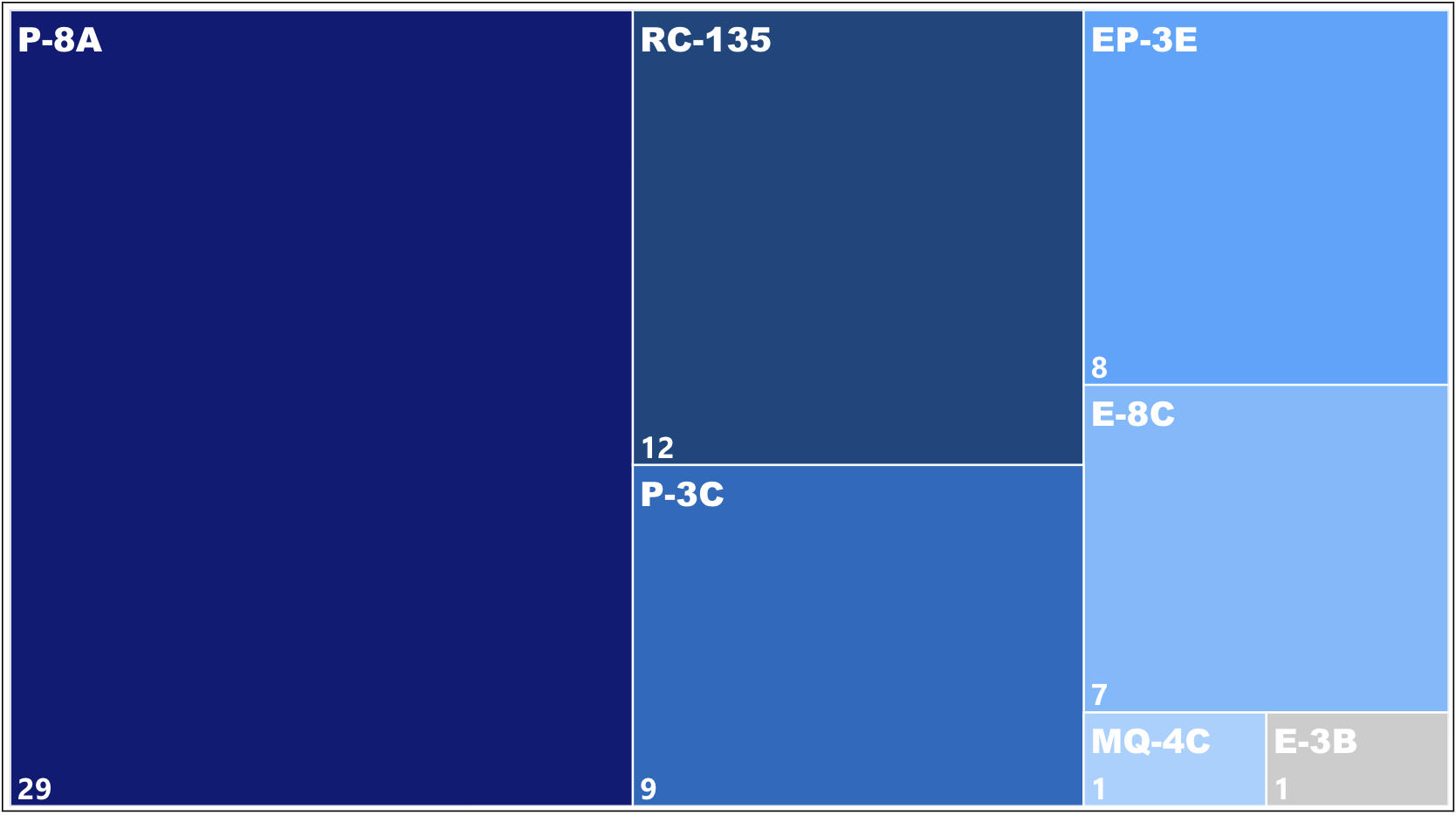
The real number is larger, given that there might be inevitable omissions in the process of data collection and analysis. Meanwhile, small reconnaissance aircraft are not included, and not all military aircraft have their ADS-B transponders switched on all the time. Also, the activities of carrier-based reconnaissance aircraft remained unknown. For example, while conducting dual-carrier exercises in the South China Sea on July 4 and July 17, the USS Nimitz and USS Ronald Reagan Carrier Strike Groups might have launched the E-2D carrier-based airborne early warning and control aircraft.
A marked increase in both the activity frequency and intensity
In July, the number of US military reconnaissance aircraft increased markedly from 35 in May and 49 in June, almost twice of that in May. Both the US Navy and Air Force participated in reconnaissance with a wide range of activity types and operational scope. Among them, about 70% were from the US Navy. The P-8A showed up with surprising frequency adding up to 29 sorties in July, which, boasting multiple functions is mainly used for broad-area maritime surveillance (BAMS) and anti-submarine warfare (ASW). It is hence a frequent visitor to the South China Sea.
Alongside the sharp increase in the frequency, the intensity was also greatly enhanced. In July, as many as 13 sorties of reconnaissance aircraft scrambled at the unconventional hours from 20:00 to 6:00 for reconnaissance of the South China Sea.
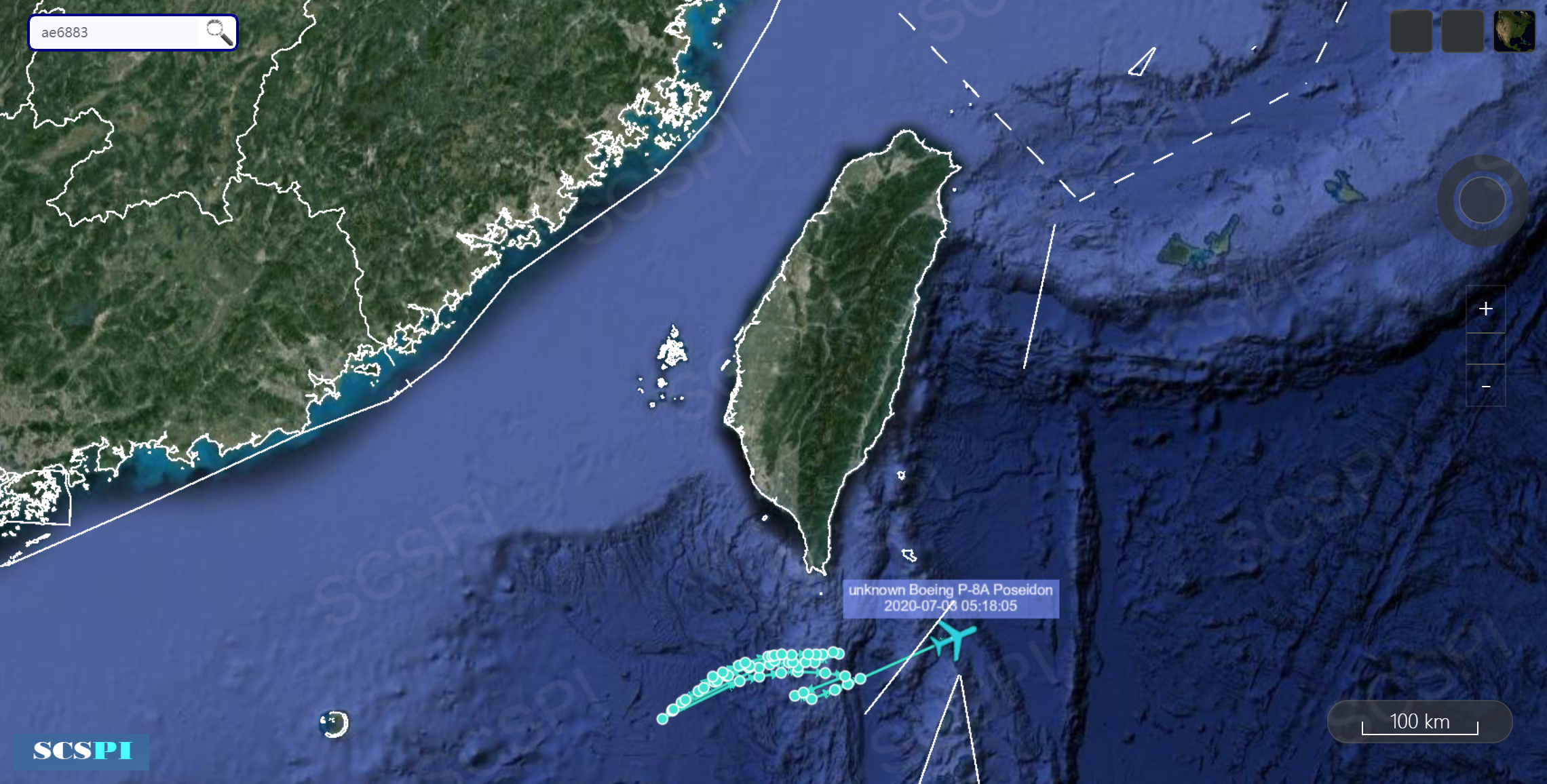
USN P-8A reconnoitered near the Bashi Channel from 00:50-05:18, July 3
In addition, a total of nine reconnaissance sorties operated within 70 NM from the baseline of China’s territorial sea, among which six entered 60NM. The closest one reached about 41 NM on July 26.
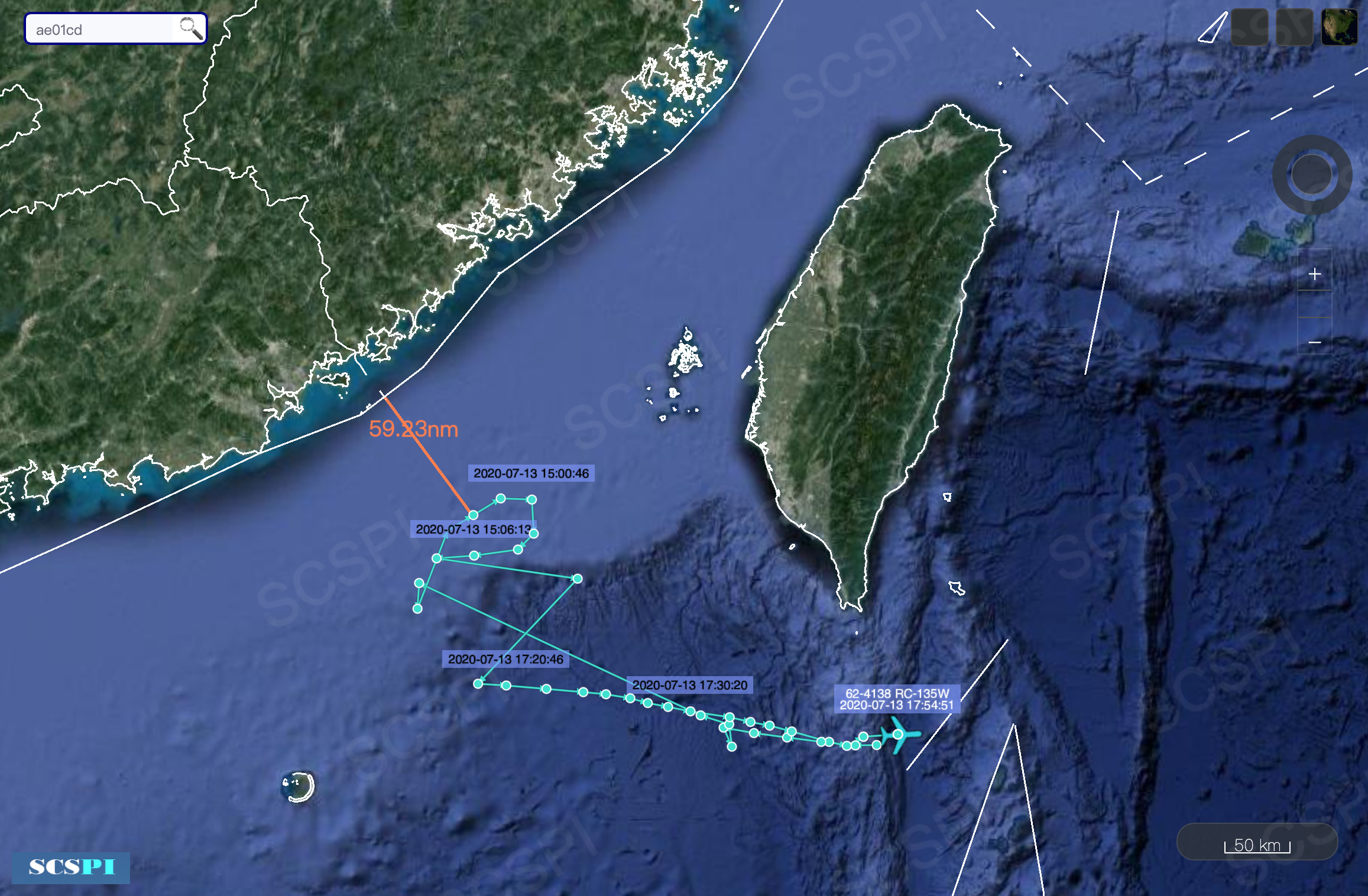
USAF RC-135W reached 59.23NM off Guangdong, July 13
Battlefield construction stepping up greatly
In recent years, against the backdrop of great power competition and “Return to Sea Control”, the US military makes very strong statements on preparing for the worst scenario in the South China Sea, with all services acting proactively. Compared with the past, the USAF has made an evidently greater deployment to the South China Sea. Various USAF reconnaissance aircraft are becoming increasingly active with a special focus on electronic reconnaissance and strategic reconnaissance, such as the RC-135W/S, which are powerful weapons in the battlefield construction of the US military.
This July also rarely saw the USAF dispatched strategic reconnaissance aircraft including the E-8C Joint STARS and the E-3 Sentry near the airspace over the coast of Guangdong Province frequently.
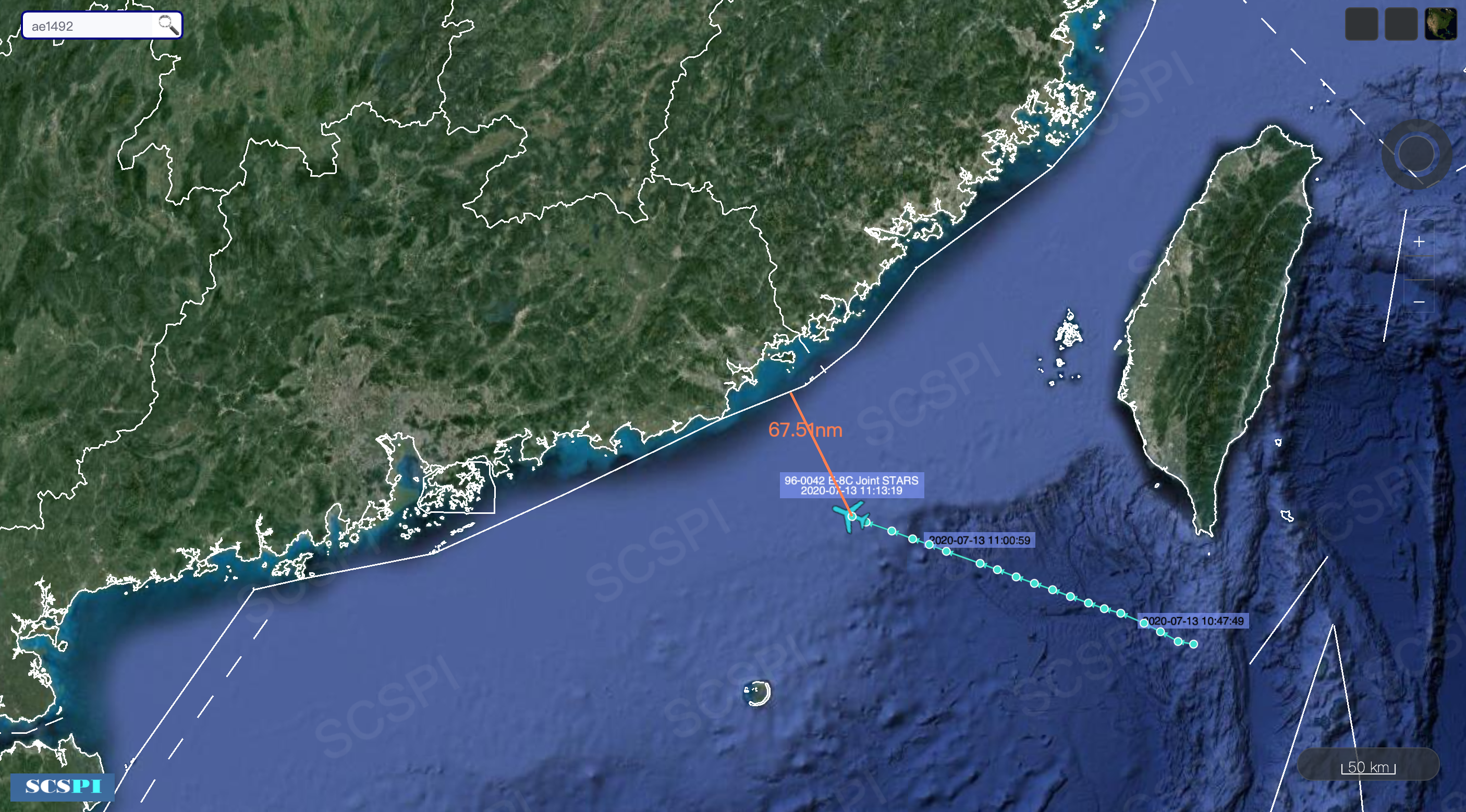
USAF E-8C approached Guangdong, July 13
The E-8 Joint STARS is an important airborne battle management, command and control, and intelligence, surveillance and reconnaissance aircraft of the US military, which plays a critical role in the surveillance of military conflicts and ground situations and the control of joint air-ground operations, functioning as the “nerve center” connecting air operations with ground operations. A total of seven sorties of E-8C were detected in July, which in fact represents an upgrade of battlefield construction and a substantive electronic confrontation.
The participation of all kinds of battle surveillance and control aircraft of the USAF indicates the US military’s stepping up efforts in battlefield construction that the reconnaissance has diverted from “defensive” into “adversarial”.
Response for major events
The reconnaissance activities of the US military in July also took on intense special takeoffs. Whenever there were military operations in and around the South China Sea, for example, PLA training in the waters off the Paracel Islands, Taiwan’s Han Kuang military exercises, and the US Navy’s two dual-carrier exercises in July, the intensity of the US reconnaissance activity grew accordingly.
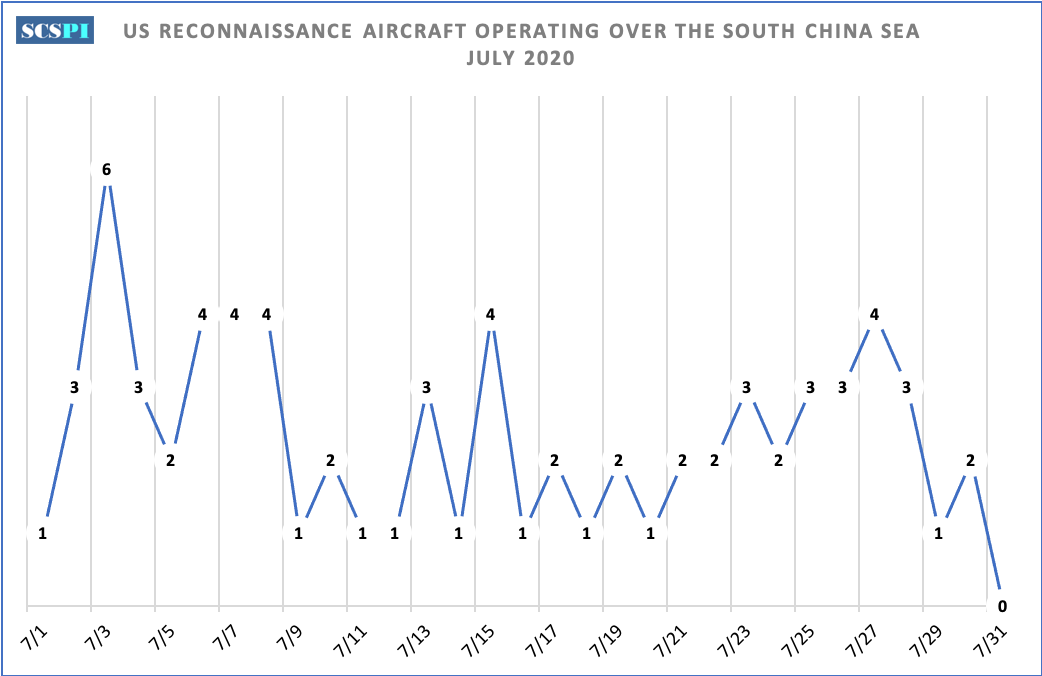
Taking the military training of the PLA in the waters off the Paracel Islands from July 1 to 5 for instance, a total of 15 sorties of US reconnaissance aircraft were spotted in five days, including the P-8A, EP-3E, and RC-135U/W. When the aircraft carriers, USS Ronald Reagan and USS Nimitz, entered the South China Sea on July 3, up to six sorties of US reconnaissance aircraft exercised all-weather and high-intensity reconnaissance over the waters.
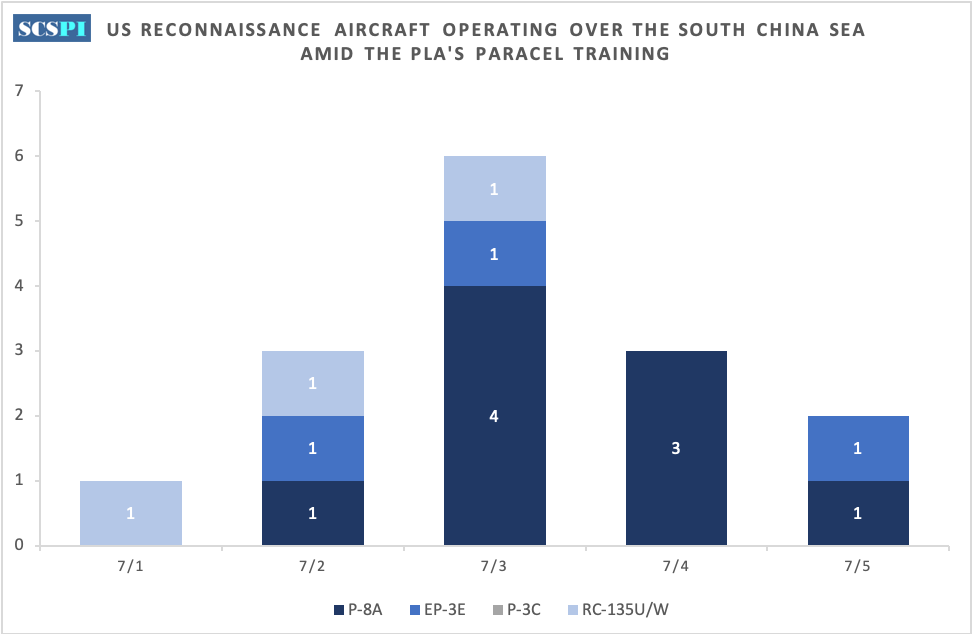
Aside from serving as an outpost for its carriers, the unprecedentedly large number of reconnaissance aircraft, including anti-submarine, air patrol, electronic and strategic reconnaissance, also enabled the US military to take a close watch on PLA training near the Paracel Islands.
It is worth noting that the close-in reconnaissance of the US military has gradually revealed its intention to increase political and military pressure. In military terms, since the US military has all-round, advanced reconnaissance technologies, such a high frequency aerial reconnaissance and close distance would not be necessary if it just wants to gather intelligence on China.
In future, the activities of large reconnaissance aircraft of the US military over the South China Sea, especially over the offshore waters of China, are expected to escalate further, which is bound to trigger higher risks of China-US military frictions.

